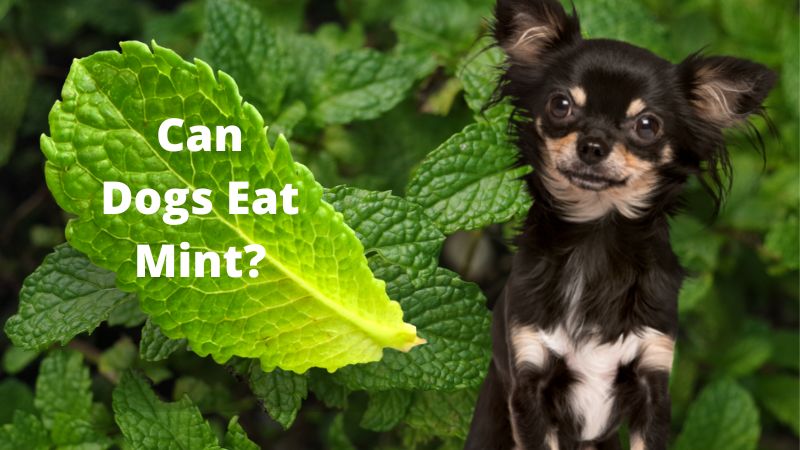
Several mint species are safe or beneficial for a dog’s health, but others can be poisonous due to their toxic content.
In addition, mint products, such as candies and chewing gum, generally contain artificially added sugar and synthetic ingredients that harm dogs.
They might also contain chemicals like Xylitol that are safe for human consumption but highly toxic to dogs.
There are severe risks involved in feeding dogs minty snacks formerly intended for human consumption.
What is Mint and its Uses?
The Lamiaceae family includes mint, which is also known as Mentha.
The herb comes in hundreds of varieties around the world, such as spearmint (Mentha spicata), peppermint (Mentha basilica), Scotch spearmint, apple mint, wild mint, lavender mint, apple mint, and pineapple mint
- A variety of health and beauty products contain the ingredient.
- It is used in chewing gums, mouthwashes, and toothpaste because mint extract kills bacteria and freshens breath.
- Peppermint relieves nausea and upset stomach symptoms.
- In addition to treating Diarrhea and vomiting, spearmint can also relieve indigestion.
Dogs and Mint: General.
Can dogs eat mint? Yes, dogs can eat mint leaves in moderation
A fresh, plain mint leaf can be safely consumed by dogs once or twice a day; however, do remember that overfeeding mint leaves to your dog may upset its digestive system.
Among the mint varieties, English pennyroyal is toxic to dogs.
The majority of the United States, except for the coldest regions, also grows along with the United Kingdom.
Important Point to Remember: Wintergreen, a refreshing herb often confused with mint, is toxic for dogs. Ensure your dog doesn’t eat mint leaves unless you can identify their species.
Dogs and Mint: Benefits?
- Mint treats can be an excellent way to enhance oral health. The refreshing aroma of mint can help freshen a dog’s breath.
- Fresh mint contains vitamins A and C, essential for maintaining healthy bones, skin, vision, and immunity.
- Digestion can be improved by consuming mint leaves since they are a natural source of fibre.
- A powerful antioxidant, mint protects cells from oxidative and free radical damage.
- It relieves nausea and diarrhoea by calming the stomach.
- Assists in the reduction of gas and inflammatory bowel disease symptoms.
- The presence of rosmarinus acid in mint may help reduce seasonal allergies in dogs.
- Mint plants may also act as nasal decongestants due to their natural menthol. It relieves respiratory symptoms by breaking up mucus and phlegm.
Dogs and Mint: Risks?
Mint products can be unhealthy. Avoid giving your dog mint products meant for human consumption, like breath mints and candies.
These products contain chemicals and added sugars that can cause increased blood sugar levels, teeth damage, and weight gain.
In many sugar-free mints and candies, an artificial sweetener called Xylitol is used, which is harmful to dogs.
As with mint candy, mint ice cream contains artificial ingredients and unhealthy sugar levels.
Mint ice cream is often supplemented with chocolate chips and vanilla extract, and both of these ingredients are harmful to dogs.
Mint overeating can cause gastrointestinal distress and abdominal pain in dogs.
Certain mint plants and species are toxic to dogs.
The English pennyroyal is one of the species that dogs can’t eat.
Pulegone is a poisonous chemical found in it that can be harmful to the liver when consumed in excessive quantities.
Dogs and Mint: A Guide to Safe Feeding?
Follow these guidelines before giving your pet a mint leaf or treat:
Any new addition to your dog’s diet, whether human food or herbs, should be discussed with a veterinarian.
A vet can also suggest how much quantity you should offer. This number is dependent on your dog’s breed and size.
Mint-containing dog foods and treats are designed specifically for dogs and are safe to consume.
Ensure that dogs are fed mint leaves only from safe plants.
When buying them from a supermarket or nursery, it is important to check that mint is not derived from English pennyroyal or wintergreen plants.
To remove potentially harmful pesticides from mint leaves, properly clean them with water before giving them to your dog.
Do not overfeed your dog.
Giving mint leaves over one or two at a time is not advisable.
When introducing a portion of new food to your dog, introduce it slowly and observe their behaviour afterwards.
Conclusion
Regardless of how safe it is, dogs may experience gastrointestinal issues if they overindulge in mint.
We wouldn’t recommend giving your faithful companion more than a few minutes of leave a day.
The mint diet is not if the dog consumes it in the form of human chocolates or candies.
Tiny breath mints and gums can include an artificial sweetener, “xylitol,” which is unsafe for dogs.
Some of these products may also contain concentrated mint oils, irritating your pet.
Call the veterinarian immediately if your dog shows discomfort, such as vomiting, fatigue, or swelling.
Leave a Reply